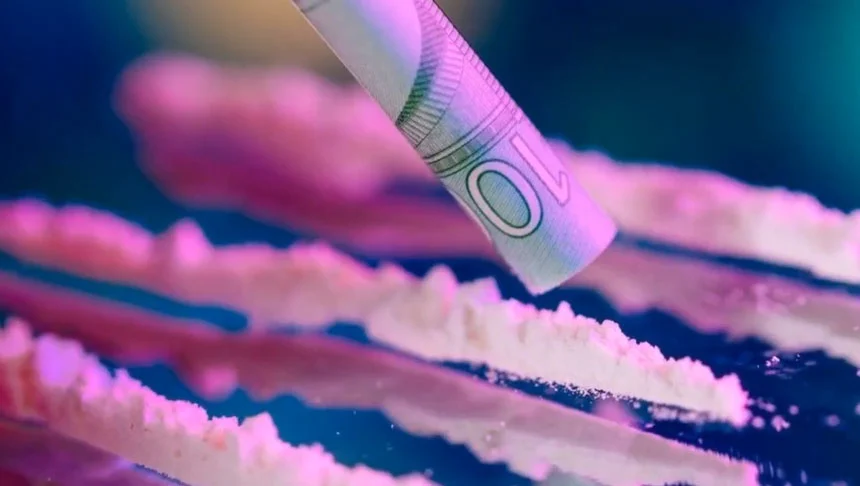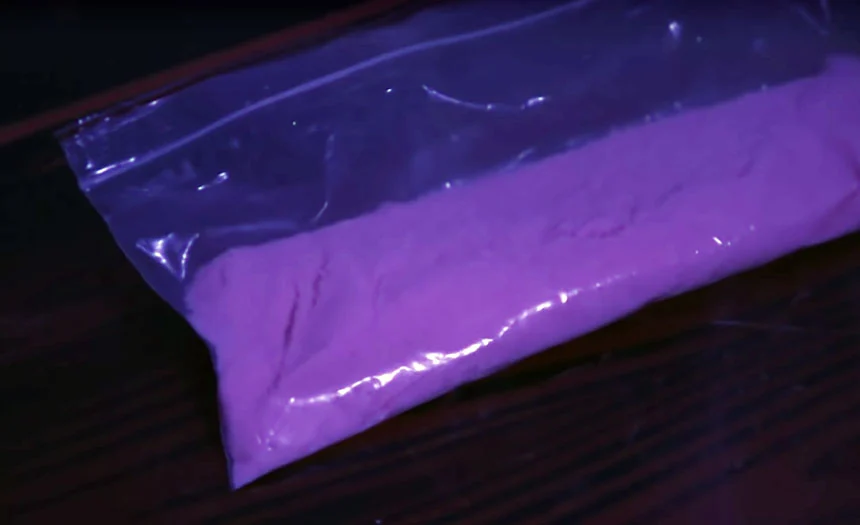Not Your Typical Cocaine Hydrochloride
Table of Contents
- Not Your Typical Cocaine Hydrochloride
- What is Pink Cocaine?
- A Brief History Of Pink Cocaine
- Understanding Pink Cocaine Abuse and Addiction
- Methods of Using Pink Cocaine
- What are the Side Effects Of Pink Cocaine
- How Dangerous is Pink Cocaine Abuse?
- Cocaine Addiction Treatment Options
- Find Pink Cocaine Addiction Treatment Today!
Synthetic drugs are some of the most widely available and commonly abused substances in the United States, due to their wide availability within the illicit drug market. One drug in particular that has recently gained more popularity is pink cocaine or ‘pink coke.’
Keep reading to learn more about the dangers and side effects of pink coke, and how you or a loved one can get help for any form of drug abuse today!
What is Pink Cocaine?

Despite what the name might suggest, pink cocaine is not an actual form of cocaine. Whereas regular cocaine hydrochloride is derived from the coca plant native to Latin America, pink cocaine is a synthetic drug made up of phenylethylamine or 2C-B.
Pink cocaine 2C-B is made to have hallucinogenic effects, which has made it a popular recreational party drug. It does not, however, have any accepted medical use, as it can have harmful effects on its user.
Like regular cocaine, pink cocaine has stimulant effects. This has caused it to be commonly compared to ecstasy as well and has led many people to believe that pink cocaine can be used as a sexual enhancement drug.
This new drug is produced in illicit laboratories and is most commonly found in the form of pills or pink powder. Unfortunately, because of how new 2C-B pink cocaine is, many people are unaware of the adverse effects it can have on their physical and mental health.
Unlike controlled substances, pink cocaine’s wide availability has allowed it to gain popularity quite quickly. Of course, this relatively new drug has also raised its fair share of public health concerns.
Because pink cocaine is not a controlled substance, its production is not regulated. This means that it will often be mixed with other harmful substances, such as amphetamines, MDMA, and even fentanyl, which can quickly be lethal if consumed.
A Brief History Of Pink Cocaine
While this synthetic drug has only gained popularity recently, it still has some history behind it. It was first created by American chemist Alexander Shulgin, who also created the infamous party drug, ecstasy.
2C-B was created in 1974 and distributed in America under names like Nexus, Erox, and Performax as a drug designed to combat erectile dysfunction and help increase sexual performance. Of course, there is no research supporting this supposed acceptable medical use.
In 2007, the novel synthetic drug found its way into South and Central America, where it quickly began to gain popularity on the illicit drug market. It is here that 2C-B earned the nickname of pink cocaine due to its stimulant and psychoactive properties.
Pink cocaine use has gained a decent amount of popularity amongst elite members of South American society, particularly in countries like Argentina, Uruguay, and Colombia. This elite status has earned pink cocaine a reputation as a popular designer drug in South America.
Understanding Pink Cocaine Abuse and Addiction
While very little is known about what makes pink cocaine addictive and how it affects the body, some studies have found that the changes in the brain and system that occur after pink cocaine use are similar to those caused by methamphetamine.
It is currently assumed that 2C-B interacts with serotonin receptors and dopamine receptors in the brain. This interaction presumably spikes the levels of these chemicals within the nervous system, which is what causes the euphoria and hallucinations associated with using this drug.
Over time, continuous use of pink cocaine can cause the user to develop a chemical dependence on this drug, where the body’s serotonin system has become reliant upon 2C-B in order to function properly.
This can make stopping the use of this drug incredibly difficult without the right support and acceptable medical intervention.
Methods of Using Pink Cocaine

There are several ways that someone may use pink cocaine, depending on what form the user has purchased it in. The most common method of consuming 2C-B is orally, usually in the form of a pill or capsule.
Snorting Pink Cocaine
While most people use pink cocaine typically through oral ingestion, snorting this drug has also gained popularity. If the drug is not already in powder form, some people may crush up a 2C-B pill and use this to snort instead.
Snorting pink cocaine can cause a faster and more intense high than taking it orally would. However, the effects will wear off more quickly.
Intravenous Pink Cocaine Use
While injection drug use may be more common with other illicit substances, pink cocaine is not usually used intravenously. This is likely due to how 2C-B is more commonly used in public spaces, where IV drug use is less likely to be accepted.
With that being said, it is possible to dissolve powdered pink cocaine into a liquid base, which can then be injected into the bloodstream. This will likely produce a quick and intense high, but one that does not come without significant danger.
What are the Side Effects Of Pink Cocaine

One of the most common misconceptions about pink cocaine is that it is less dangerous than other drugs, due to its “designer” status in some places. However, even in small doses, 2C-B can have dangerous side effects, including:
- Severe hallucinations
- Rapid heart rate
- Reduced cognitive abilities
- Poor judgment-making skills
- Fever
- Dehydration
- Anxiety and panic attacks
- Seizures
Pink Cocaine Overdose Symptoms
If someone is taking 2C-B in high doses, or mixing this drug with other substances, they will be at an increased risk of experiencing a drug overdose, which can cause life-threatening complications.
There are a few similarities between a pink cocaine overdose and a regular cocaine overdose, including symptoms such as:
- Chest pain
- Nausea and vomiting
- Increased heart rate
- Delirium
- Anxiety and paranoia
- Seizures
If you or someone else is displaying any of these symptoms, it is important to seek emergency medical help immediately, as these can become fatal if left untreated.
How Dangerous is Pink Cocaine Abuse?
While the psychedelic effects of these drugs tend to be enough to lure people into using them, substances like pink cocaine are often far more dangerous than most individuals may initially assume.
Their popularization and glamorization can often hide the reality that illicit substances like 2C-B can be highly habit-forming.
Despite how enjoyable the brief high pink cocaine can produce may seem initially, over time, continuing to use this drug will become highly destructive to the user’s physical and mental health, as well as to that of their loved ones.
If you are struggling with pink cocaine abuse and addiction, there are several substance abuse treatment services and recovery programs available to help you overcome these habits.
Cocaine Addiction Treatment Options

Pink cocaine can quickly send its users down a dangerous path of abuse and addiction. Fortunately, there are several treatment options available to help struggling individuals stop using 2C-B for good.
There is no one-size-fits-all approach to treating addiction, but many people will participate in a variety of the same treatment programs on their path to sobriety. This can include medical detox, inpatient and outpatient treatment, medication management, and behavioral therapy.
Speaking with your healthcare provider or a Find Addiction Rehabs addiction specialist today can help you understand your treatment needs, and find rehab programs that will be able to address all of your concerns and put the right foot forward on your road to recovery.
Find Pink Cocaine Addiction Treatment Today!
If you or a loved one is struggling with drug abuse and addiction, help is available! At Find Addiction Rehabs, we understand how difficult it can be to overcome your substance abuse on your own.
That’s why our hotline is available 24/7, so that you can call anytime and get answers to all of your recovery questions. We can connect you with affordable and accessible treatment programs that can help you overcome your addiction and achieve long-term recovery.
Call now, and one of our representatives will help you take your first step on the path to sobriety, today!
Charles F. has been an active part of the Florida recovery community for over 5 years. He began as a behavioral health technician at an addiction treatment facility in Ocala, Florida and has since begun training as a Licensed Addiction and Chemical Dependency counselor in Boca Raton. Charles’ passion involves the promotion of recovery and helping spread the hope of recovery to as many readers as possible!


